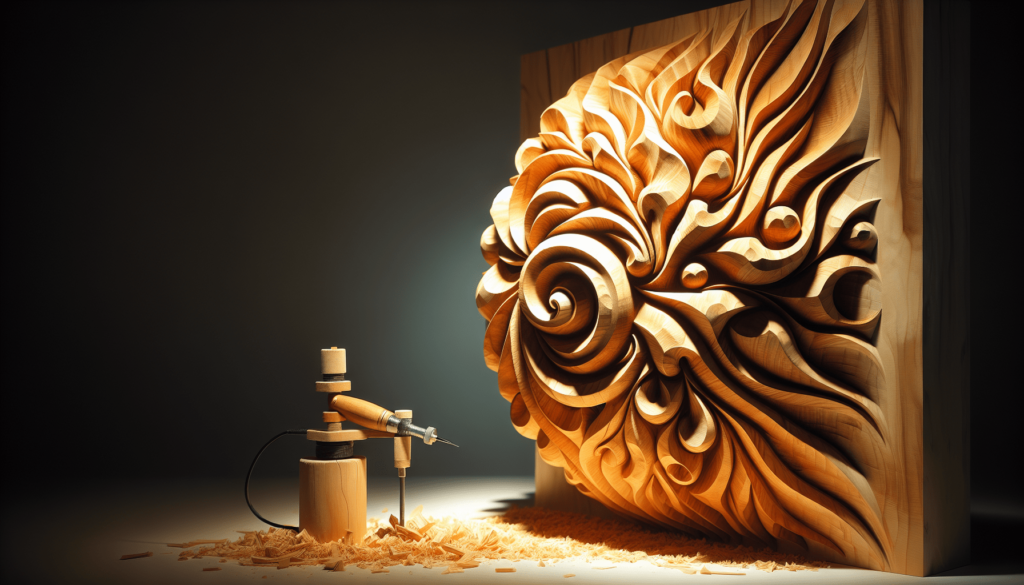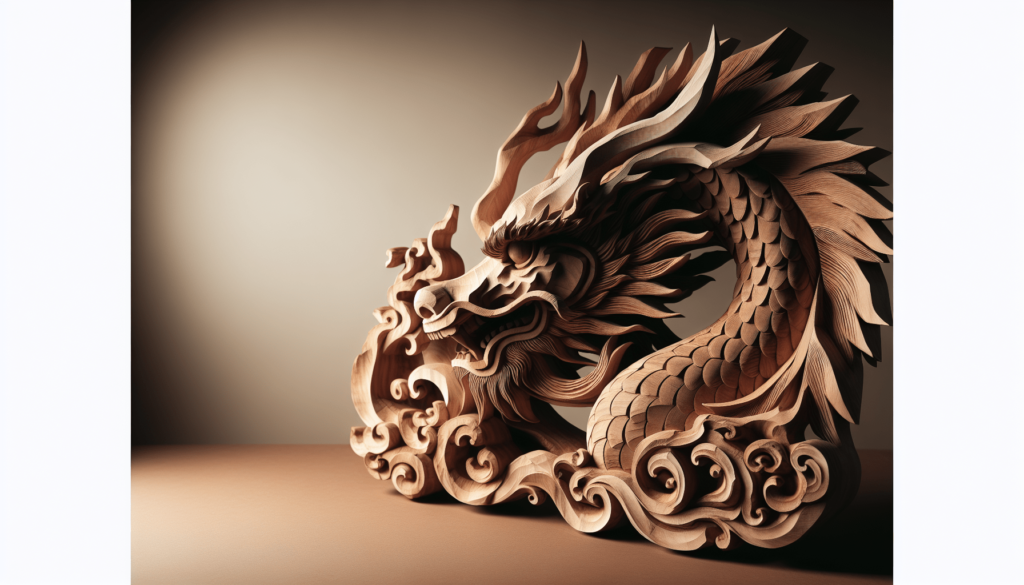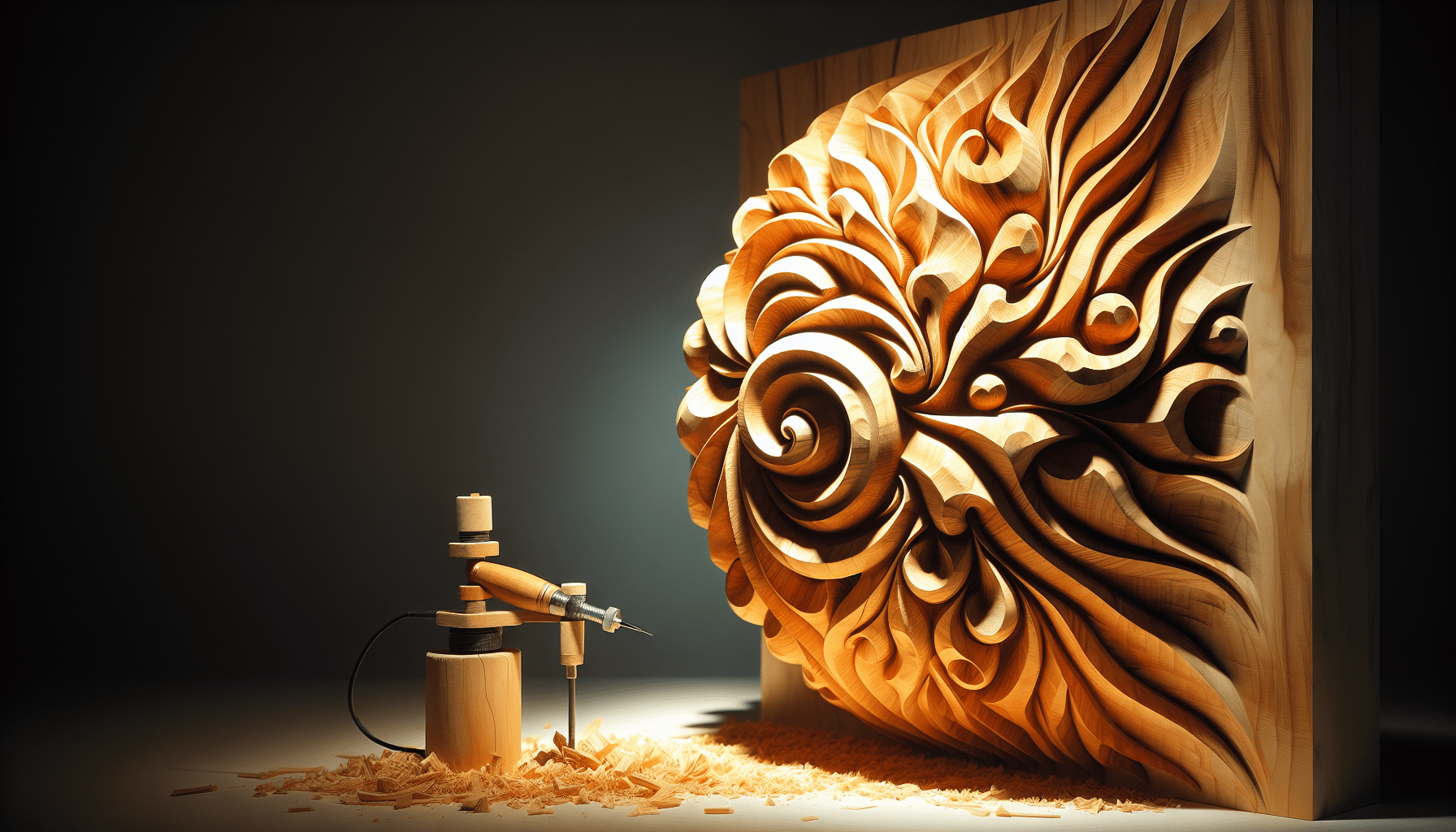I’ve recently delved into the fascinating world of wood burning, also known as pyrography, and it’s been a rewarding experience to create intricate designs on wooden surfaces. However, as I explored this hobby, I realized there are important safety measures one must consider. Wood burning involves high temperatures and potential exposure to smoke and toxic fumes, so taking the right precautions is essential to avoid accidents and health risks. Let’s take a closer look at how to enjoy this creative pastime while remaining safe and mindful. Is wood burning a safe hobby? It’s a valid question, something I asked myself when I first picked up a wood-burning kit. I mean, the thought of wielding a sizzling hot tool to create delicate designs on a slab of wood does sound a bit questionable, doesn’t it? I had visions of accidentally turning my living room into a scene from a low-budget disaster movie. But as a lover of puns and a wannabe artist, I figured I’d dive into the world of wood-burning to see if I could light the creative spark, without any unintended pyrotechnics.
What is Wood Burning?
The Art Itself
Wood burning, also known as pyrography, is the art of decorating wood or other materials with burn marks resulting from the controlled application of a heated tool. The term pyrography literally means “writing with fire” from the Greek words pur (fire) and graphos (writing). Sounds kind of mystical, doesn’t it? You can make anything from keychains to elaborate wall art. I once saw an artist create a stunning image of a wolf under a full moon that made me want to howl—or at least attempt a rudimentary stick figure.
The History
How old is this art form, you ask? Pirates might not have been sitting around etching the Jolly Roger into driftwood, but the practice dates back to ancient civilizations. Egyptians and Chinese artists have records of using heated metal rods to burn designs onto wood and leather. It’s fair to say they didn’t have electric kits back then, but hey, they made it work.
Is Wood Burning Safe?
Now, straight to the heart of the matter—is this hobby safe? Well, let’s break it down. I’m no safety officer, but with a little precaution, you’re far less likely to burn down your house. However, I can’t promise you won’t singe a carpet or two. Here’s how I looked at the safety aspects of wood burning.
Potential Hazards
Burns
First, let’s talk burns—since that’s what you’re playing with here. The tool you use can get incredibly hot, some reaching up to 1,000 degrees Fahrenheit. Imagine touching your stove when it’s on full blast. Ouch, right?
Fire Hazard
Obviously, you’re dealing with heat and wood, which, if you remember from kindergarten, can lead to fire. One wrong move, and instead of a cute little sign that says “Welcome,” you might need to welcome your local firefighters.
Fumes
Then, there are the fumes. Burning wood, especially certain types, can release harmful fumes. Cedar, for example, can produce toxic smoke. Choose your materials carefully to avoid this problem.
Safety Measures
So, how do you avoid these pitfalls? Here’s what I do:
-
Work in a Well-Ventilated Area: I always set up my station near an open window or use a fan. This helps to disperse any smoke or fumes that are released.
-
Protective Gear: Wearing gloves can protect your hands from accidental burns. Safety glasses aren’t a bad idea either, especially if chips of wood might fly up.
-
Right Equipment: Using a tool with variable temperature controls can help. You can start at a lower temperature and work your way up.
-
Fire Extinguisher: It’s always smart to have one nearby just in case.
-
Proper Wood: Make sure you’re burning on untreated wood. Treated wood can release chemicals that are harmful.
Summary of Safety Tips
| Safety Measure | Why It’s Important |
|---|---|
| Well-Ventilated Area | Disperses harmful fumes and smoke |
| Protective Gear | Prevents burns and protects eyes |
| Right Equipment | Allows for controlled burning, reducing mishaps |
| Fire Extinguisher | Provides immediate action in case of an emergency |
| Proper Wood | Avoids harmful chemicals released from treated wood |

Tools of the Trade
Now that we’re not going to burn down the house, let’s talk tools.
Basic Equipment
Pyrography Pen
This is your main tool. It’s basically like a soldering iron but designed for artistic work. There are tons of options out there, from simple plug-and-play versions to more advanced models with temperature control. I started with a basic model—think of it as training wheels for my inevitable upgrade.
Tips and Nibs
Different tips allow for different styles of burning. You’ll have your standard tips, calligraphy tips, shading tips, and more. I once tried to use one of the more intricate tips and ended up with a blob that was supposed to be a butterfly. Guess you can call it abstract art.
Sandpaper
You’ll need this to prep your wood and smooth out any rough edges. The last thing you want is an uneven surface messing up your masterpiece.
Standard Pyrography Tools
| Tool | Purpose |
|---|---|
| Pyrography Pen | Main tool for burning designs into wood |
| Tips and Nibs | Allows for varied styles and details in wood burning |
| Sandpaper | Prepares and smooths the wood surface |
Advanced Equipment
Temperature Control Unit
A temperature control unit can help you manage the heat level of your pen. This can be crucial for projects that require precision. I felt like a DJ mixing my favorite tracks, tweaking the temperature until I got the perfect burn.
Stencils and Patterns
Not everyone can freehand elaborate designs (trust me, my first few attempts were closer to “abstract toddler” than “modern Picasso”). Using stencils can provide a jumping-off point.
Advanced Equipment
| Tool | Purpose |
|---|---|
| Temperature Control Unit | Manages heat level for more precise wood burning |
| Stencils and Patterns | Provides guidance and helps achieve more intricate designs |
Techniques and Tips
You’ve got the safety measures in place and the tools at hand, so let’s dive into some techniques.
Basic Techniques
Outlining
Start by outlining your design. Think of this as your roadmap. You’re less likely to go wrong if you have a clear path. One time, I tried to freestyle a simple tree outline, and it ended up looking like a mutant octopus. Trust the outline.
Shading
Once you’re comfortable with outlining, shading can add depth to your pieces. It’s kind of like coloring in a coloring book; just a bit more intense. Light pressure makes lighter shades, heavy pressure makes darker ones.
Dotting
Dotting is great for texture. This involves simply pressing the heated tip into the wood and pulling it back up, creating small burnt dots. It’s a fantastic technique for adding texture to your work. I used it to give the appearance of gravel in one piece. Really made it pop!
Advanced Techniques
Gradient Effects
Creating gradient effects can be a bit challenging but rewarding. This involves carefully changing the pressure and speed of your pen as you burn, resulting in a smooth transition between light and dark areas.
Layering
Layering involves burning multiple layers to add depth. Once you get the hang of basic shading, you can start adding layers to make your work look more three-dimensional. It’s kind of like cooking lasagna but with less cheese and more fire.
Techniques Overview
| Technique | Description |
|---|---|
| Outlining | Provides a basic structure for your design |
| Shading | Adds depth and dimension to the artwork |
| Dotting | Adds texture and interest |
| Gradient Effects | Creates smooth transitions between light and dark areas |
| Layering | Adds multiple layers for a 3D effect |

Choosing Your Wood
So, which wood should you use?
Types of Wood
Basswood
Basswood is my go-to. It’s soft, easy to work with, and produces minimal smoke.
Birch Plywood
Another good option is birch plywood. It’s slightly harder than basswood but still manageable and less likely to splinter.
Poplar
Poplar is another softwood that’s easy to burn on. It’s readily available at most hardware stores and pretty affordable, too.
Types of Wood
| Wood Type | Characteristics |
|---|---|
| Basswood | Soft, easy to work with, minimal smoke |
| Birch Plywood | Slightly harder, less likely to splinter |
| Poplar | Affordable, readily available, easy to burn on |
Avoid These
Stay away from any wood that’s been chemically treated, as it can release toxins when burned. Also, avoid woods like pine and cedar, which can release resinous fumes.
Woods to Avoid
| Wood Type | Reason to Avoid |
|---|---|
| Treated Wood | Releases toxic fumes when burned |
| Pine and Cedar | Releases resinous fumes |
Project Ideas
You’ve made it this far, so let’s talk about some fun projects.
Easy Projects
Coasters
Coasters are great for beginners. They’re small, manageable, and even if they don’t turn out as expected, nobody will mind—unless you make them as a wedding gift, then maybe rethink your choice.
Keychains
Another simple project. You can start with basic shapes and simple designs. Plus, it’s hard to mess up something that tiny.
Intermediate Projects
Name Plates
A little more challenging but rewarding. These make great personalized gifts. I made one for my nephew with a dragon on it, and he was thrilled. Okay, it looked more like a lizard, but who’s judging?
Decorative Spoons
Wooden spoons with decorative handles are both functional and decorative. Just make sure they’re food-safe!
Advanced Projects
Wall Art
Large, intricate wall art pieces can be incredibly satisfying but also quite challenging. It’s the ultimate test of your skills and patience.
Furniture
If you’ve gotten this far, maybe it’s time to tackle a bigger project like a decorative wooden chair or table. It’s ambitious but a true showcase of your talent.
Project Ideas Based on Skill Level
| Skill Level | Project Type |
|---|---|
| Easy | Coasters, Keychains |
| Intermediate | Name Plates, Decorative Spoons |
| Advanced | Wall Art, Furniture |
Conclusion
So, is wood burning a safe hobby? With the right precautions, equipment, and a bit of common sense, it can be. It’s a fantastic way to create something beautiful while enjoying a meditative, hands-on activity. Just follow safety measures, choose the right materials, and practice, practice, practice. Who knows? You might discover a new passion. And if nothing else, you’ll have some personalized keychains to show off at the next family gathering. Stay safe, and happy burning!

